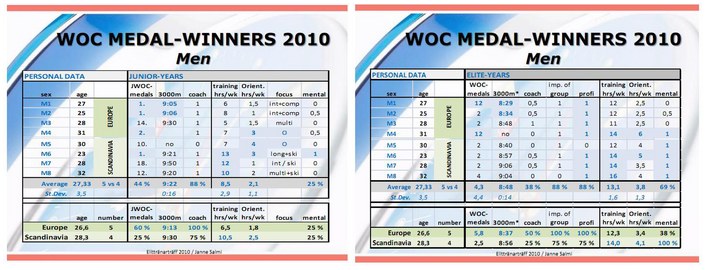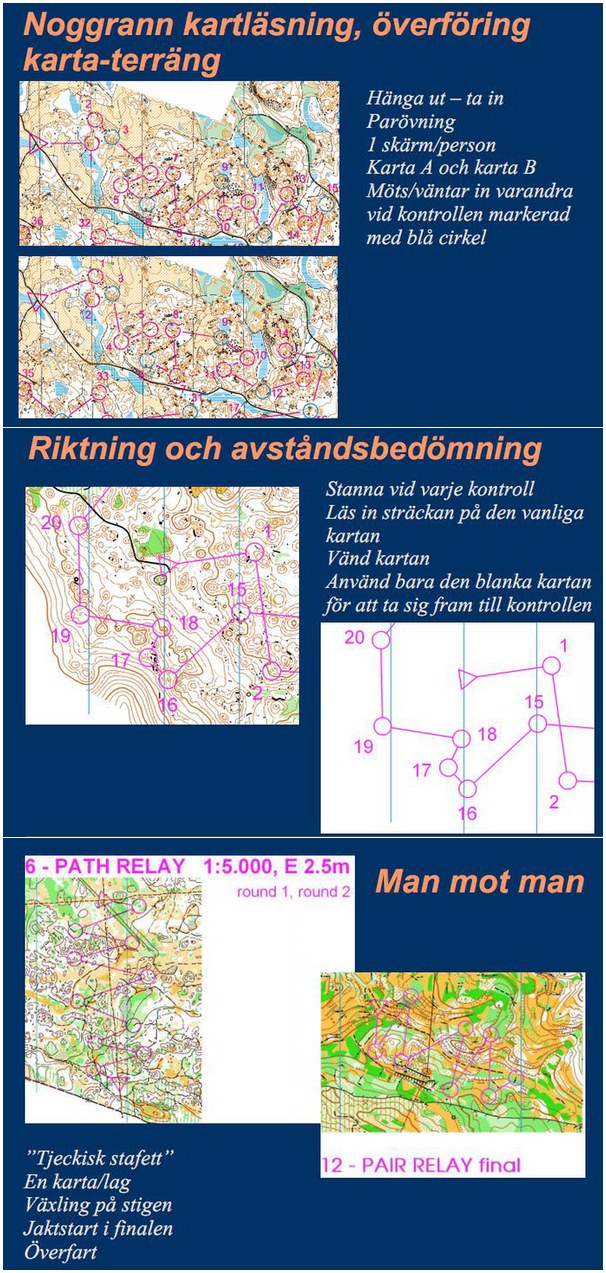- How to become a WOC medal winner and other presentations

“How to become a WOC medal winner” (Janne Salmi), “How can we improved the quality of the o-technical training” (Eva Jurenikova) and “Developments in the international elite orienteering” (Janne Salmi) were three of the presentations presented at Elittränarträffen in Sweden which should be very interesting to the readers of o-training.net.
60 of Swedens elite trainers within orienteering were present at the Elittränarträffen – with some very interesting sessions. See below for some of the content – and link to the full presentations at the bottom of this article.
“How to become a WOC medal winner” (Janne Salmi)

Janne Salmi presented the skills and qualities needed for a top-orienteer based on a combination of previous knowledge and the coaches and athletes comments. Also included in the presentation was the background and training of the WOC medal-winners of Trondheim, both in their junior-years and in 2010.
There is a lot of interesting content in this presentation for anybody interested in getting to the top in orienteering. Some example content:
- See above for big thumbnails of some slides related to how the skills and qualities vary through the years when going from a junior orienteer to an elite orienteer – this is of course also important related to where to put priorities in the training.
- See below for big thumbnails of two slides related to training amount, 3000 meter times and some other data for the WOC 2010 medal winners both in their junior years and in their elite years.
You find the link to the complete presentation below – a lot of very interesting content here.

“How can we improved the quality of the o-technical training” (Eva Jurenikova)
This presentation by Eva Jurenikova (Trainer of the Year in Sweden last year) is in Swedish language. The first part of the presentation is related to how important it is to have high quality in orienteering technical trainings – and also describing what is meant by high quality trainings. Some bullet-points,
- High quality trainings gives motivation which again gives concentrated athletes. Concentration is needed in order to learn from the trainings.
- Some tips for better concentration: Use of GPS, A clear goal for each training, run in pairs, shorter trainings/divide a training into several shorter parts
Next there is some discussion about how to analysis your training/o-technical training. One of the tools mentioned here is 3DRerun (which is still in closed beta – I hope to get it out to you soon!) – another tool is statistics of mistakes.
The last part of the presentation gives a lot of nice training examples. Several of these are already in the orienteering exercises section of the O-training.net Wiki, but there are also several new ones which I’d like to get included in the o-training.net Wiki exercise section (please help out if you have time – you get an account for the o-training.net wiki here).
Below I have included three interesting exercises which I have not seen before – all of which seem to be very nice exercises.
- The first exercise is a very good exercise for two persons on the same level when you have no controls in the forest. Each person carries one control – and there are two maps A/B. The runners meet at each blue control.
- The second exercise is a direction exercise where you run on a course on a “white map”. There is a similar exercises in the o-training.net database (see also this one), the difference for the current exercise is that you stop at each control to take a look at the full map, and then run the leg on the white map. This introduces a new element of map memory, and you get closer to what you actually have in a competition situation.
- The third exercise is the “Czech Relay” exercise which looks like a very nice high-speed exercise to train man-against-man. The course is back and forth over a road, and exchange is at each road crossing.
Find the link to the complete presentation of Jurenikova at the bottom of this page.

“Developments in the international elite orienteering” (Janne Salmi)
A very interesting presentation about the development in elite orienteering by Janne Salmi. Some parts of it are also interesting from an o-technical training point of view – especially the part about what the various disciplines are about (see the large thumbnails of a few slides below).
You find link to the complete presentation below.

Full presentations
You find the link to the full presentations below – or alternatively in the “Overview articles” section of o-training.net where you also find a lot of other interesting resources related to o-technical training.
- Björn Ljunggren: Physical training (Swedish language)
- Eva Jurenikova: Orienteering technical training (Swedish language)
- Susanne Wiklund-Björk: Leadership (Swedish language)
- Janne Salmi: Development within international elite-orienteering (English language)
- Janne Salmi: How to become a World Champs medal winner (English language)
- Mattias Karlsson: Championships preparations (Swedish language)




















